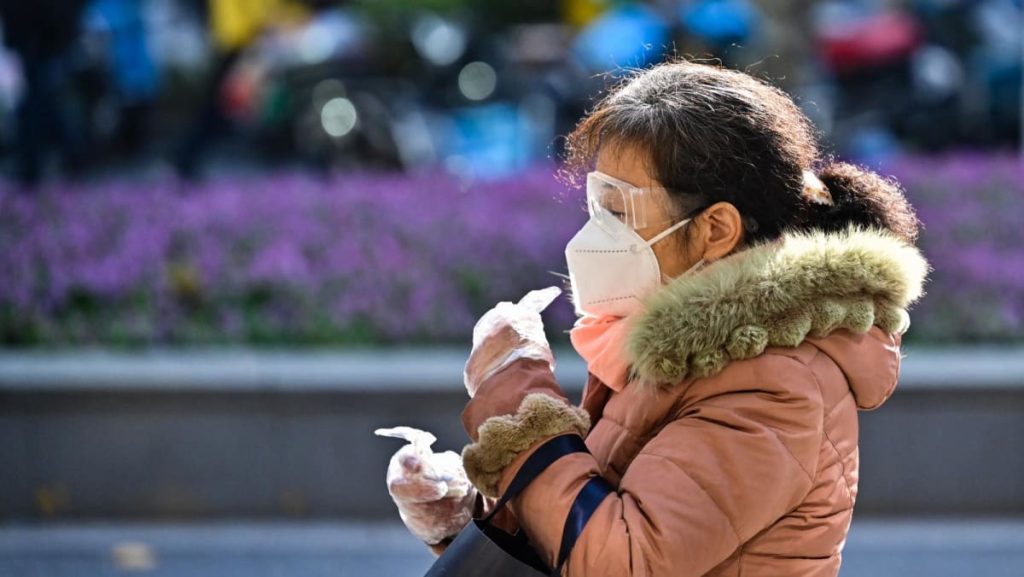China is currently experiencing a surge in respiratory infections, including a notable increase in cases of human metapneumovirus (HMPV), particularly among children aged 14 and below. This surge is occurring amidst the typical winter increase in respiratory illnesses across the northern provinces of China. While specific figures haven’t been released, the Chinese Center for Disease Control and Prevention (CDC) has confirmed an upward trend in overall respiratory diseases, initially observed in the week of December 16th to 22nd and continuing through the week of December 23rd to 29th. This surge has led to heavily congested hospitals and clinics, as evidenced by images and videos circulating on Chinese social media. The Chinese government is emphasizing preventative measures like mask-wearing, vaccinations, and hygiene practices to mitigate the spread.
The Chinese CDC acknowledges that the country is in the midst of the peak season for respiratory diseases, a pattern typical for the winter months in the northern hemisphere. While the current surge is significant, Chinese officials maintain that the severity and scale of the infections are less than what was experienced in the previous year. To further monitor the situation, the Chinese CDC is implementing a pilot monitoring system for “pneumonia of unknown origin,” which involves establishing specific protocols for laboratories and disease control agencies to identify and manage such cases. This proactive measure aims to enhance surveillance and response capabilities in the face of evolving respiratory threats.
Human metapneumovirus (HMPV) is a common respiratory virus that presents with symptoms similar to the flu, including cough, fever, nasal congestion, and shortness of breath. In more severe cases, HMPV can lead to complications such as pneumonia or bronchitis. While HMPV can affect individuals of all ages, young children, older adults, and individuals with compromised immune systems are particularly susceptible to more severe manifestations. The incubation period for HMPV typically ranges from three to six days. Like other respiratory viruses such as COVID-19 and influenza, HMPV spreads through close contact with infected individuals, respiratory droplets produced by coughing or sneezing, and contact with contaminated surfaces.
The US Centers for Disease Control and Prevention (US CDC) has issued a health advisory regarding HMPV, emphasizing the virus’s prevalence during late winter and spring in temperate climates. They highlight the vulnerability of young children, the elderly, and those with weakened immune systems. The advisory stresses the importance of preventive measures, including frequent handwashing, covering coughs and sneezes, and avoiding close contact with sick individuals. This information underscores the need for heightened public awareness and proactive measures to minimize the spread of HMPV, especially among vulnerable populations.
The current surge in respiratory illnesses, including HMPV, in China underscores the continued challenges posed by respiratory viruses. The situation highlights the importance of robust surveillance systems, public health messaging, and individual preventative measures to mitigate the impact of these infections. The Chinese government’s proactive approach in implementing a monitoring system for pneumonia of unknown origin and emphasizing preventative measures reflects a commitment to addressing the ongoing health concerns. The experience in China serves as a reminder of the global interconnectedness of health challenges and the need for international collaboration to effectively manage and respond to emerging respiratory threats.
The convergence of factors such as the typical winter increase in respiratory illnesses, the circulation of HMPV, and the lingering concerns about COVID-19 necessitate a multifaceted approach to public health management. The situation in China underscores the importance of continued research and development of effective diagnostic tools, antiviral therapies, and vaccines to combat respiratory viruses. Furthermore, strengthening public health infrastructure, including surveillance systems, laboratory capacity, and healthcare resources, is crucial to effectively manage and respond to outbreaks. International collaboration and information sharing are essential to address the global challenges posed by respiratory viruses and ensure a coordinated and effective response.

